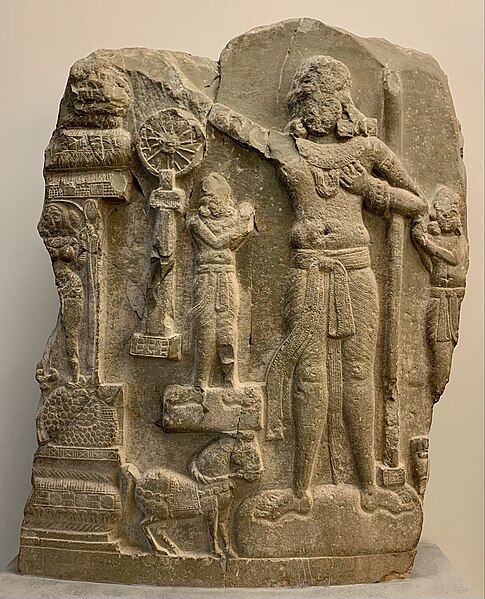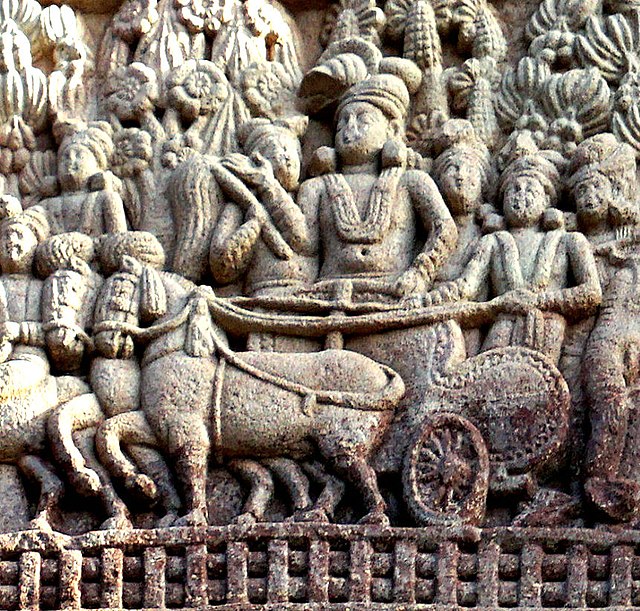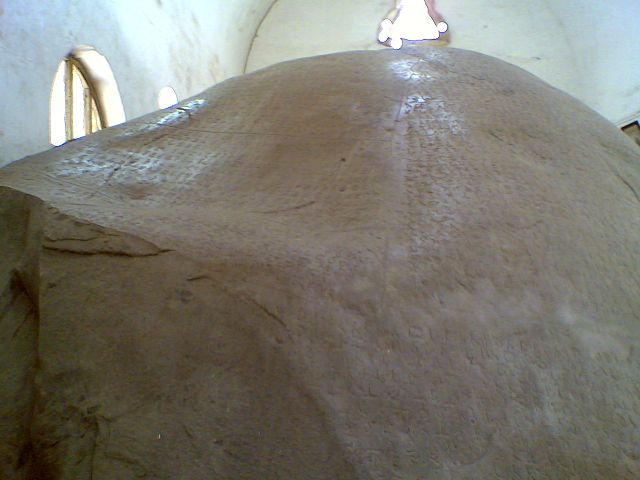The Ashoka Chakra is an Indian symbol which is a depiction of the Dharmachakra. It is called so because it appears on a number of edicts of Ashoka, most prominent among which is the Lion Capital of Ashoka. The most visible use of the Ashoka Chakra today is at the centre of the Flag of India, where it is rendered in a navy blue colour on a white background, replacing the symbol of charkha of the pre-independence versions of the flag. It is also shown in the Ashoka Chakra medal, which is the highest award for gallantry in peacetime.
Depiction of a chakravartin, possibly Ashoka, with a 16-spoked wheel (1st century BCE/CE)
Ashoka, popularly known as Ashoka the Great, was the third Mauryan Emperor of Magadha in the Indian subcontinent during c. 268 to 232 BCE. His empire covered the largest part of the Indian subcontinent, stretching from present-day Afghanistan in the west to present-day Bangladesh in the east, with its capital at Pataliputra. A patron of Buddhism, he is credited with playing an important role in the spread of Buddhism across ancient Asia.
A c. 1st century BCE/CE relief from Sanchi, showing Ashoka on his chariot, visiting the Koliyas at Ramagrama.
Ashoka's Major Rock Edict at Junagadh contains inscriptions by Ashoka (fourteen of the Edicts of Ashoka), Rudradaman I and Skandagupta.
King Ashoka visits Ramagrama, to take relics of the Buddha from the Nagas, but in vain. Southern gateway, Stupa 1, Sanchi.
The Major Rock Edict No.13 of Ashoka, mentions the Greek kings Antiochus, Ptolemy, Antigonus, Magas and Alexander by name, as recipients of his teachings.





